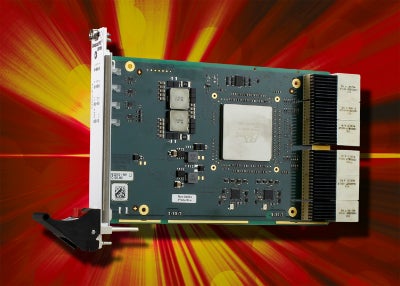
16 PCIe 3.0 ports, 64 lanes, 1GB/s data transfer rates per lane implemented on the fast CompactPCI Serial standard to get a fully meshed communication via the backplane; these are the telling arguments of the PCI Express switch GX1.
Its capabilities can be used for example in multi CPU applications for high-speed video and image processing, supercomputing and high-performance routing applications.
While the CompactPCI Serial standard offers a full mesh communication via ethernet on the backplane, the switch board GX1 enables the same advantages also for PCIe-based connections.
GX1 is a high-end switch fabric for the system slot, which supports both multi-root and multi-host configuration. In the multi-root configuration up to three CPU boards with their proprietary peripheral cards can be addressed, while in the multi-host configuration all end-point (CPU and / or peripheral) are communicating flexibly with each other.
The latter is especially suited for performance-intensive applications with changing tasks, such as building a supercomputer, or for the data-intensive image processing within a magnetic resonance tomography (MRT).
Perfect playmates for GX1 could be the multicore CPU cards G25A (Intel Xeon D) and G52A (Freescale QorIQ) from MEN, which support PCIe 3.0 via the backplane similarly to the GX1 and have been developed especially for networking systems with high demands of data transfer rates and computing performance.
The 64 lanes of the GX1 can transmit their data with 1GB/s per lane.
Thanks to an application software in the root complex of GX1, the switch ports of the CompactPCI Serial card can be configured individually and therefore adapted to different backplane designs.
Together with software tools for monitoring and diagnosis the GX1 becomes a reliable and high-capacity switching component for fast and serial point-to-point communication via PCIe 3.0.
